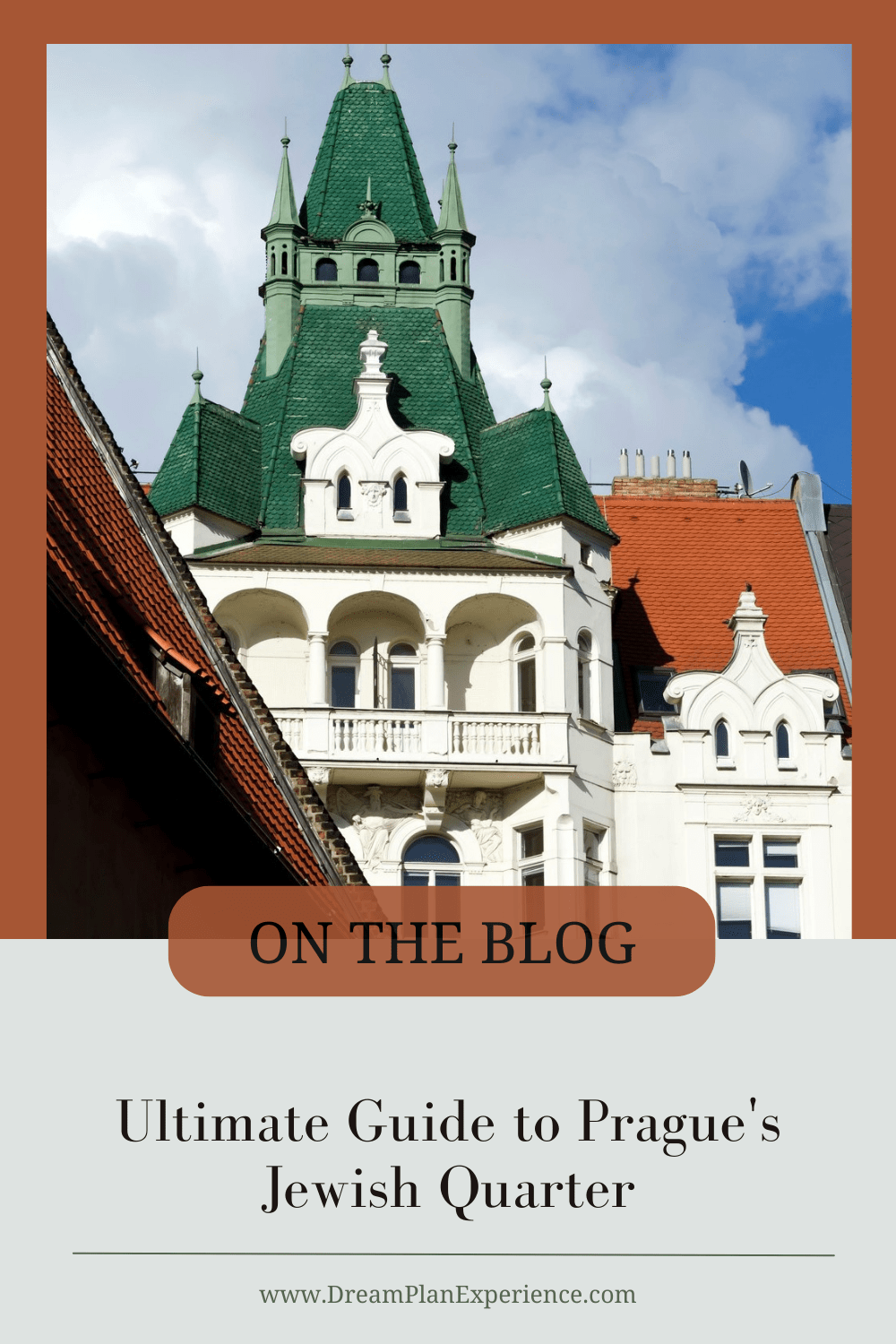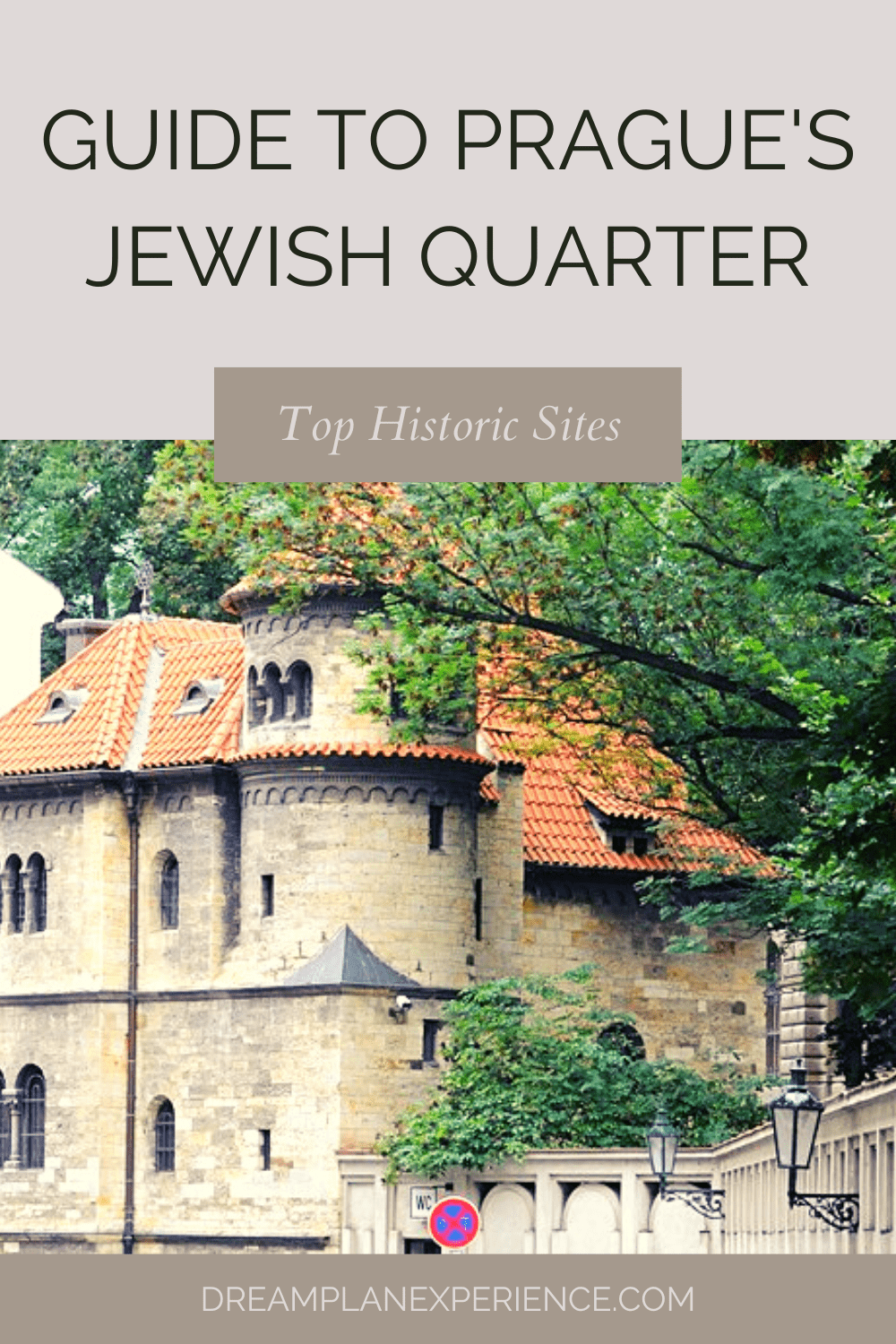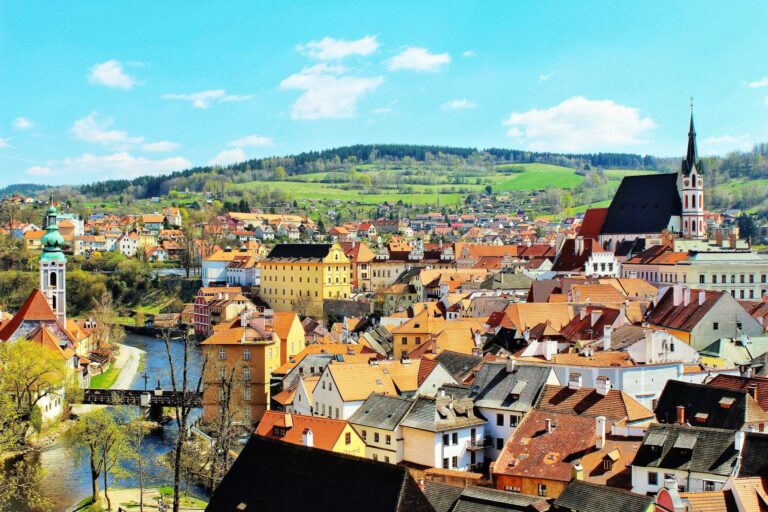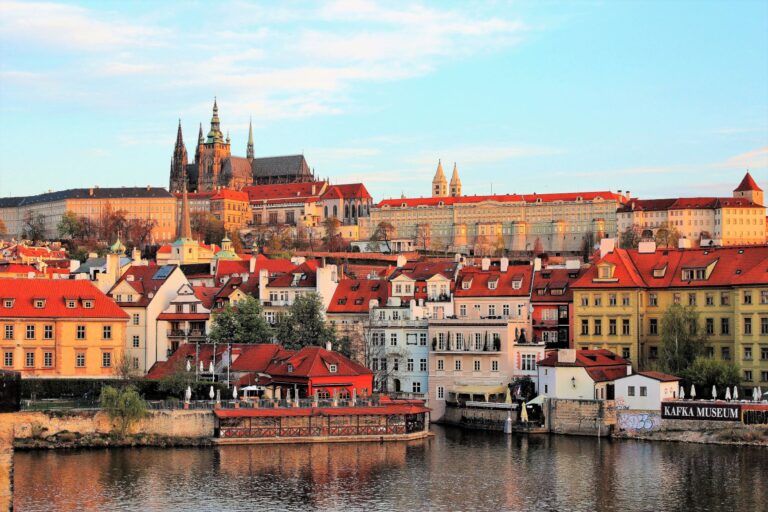Prague Jewish Quarter – 11 Things to See
Anyone who visits Prague, the capital city of the Czech Republic, knows how captivating it really is. The Old World charm and its history are both fascinating and bewitching – especially the Prague Jewish Quarter.
The Prague Jewish Quarter is situated between Old Town and the Vltava River, on the right bank. This UNESCO World Heritage site is significant not only as a reminder of a tragic part of the world’s history but also of its undeniable beauty and charm.
The best way to experience the Jewish Quarter in Prague is on a walking tour to learn more about its history and see those unmissable sights.
In this article, I will share all of the top sightseeing sights in the Prague Jewish ghetto.
Table of Contents
This post may contain affiliate links. If you click on an affiliate link, at no additional cost to you, I will earn a small commission if you decide to book. Please check out my privacy policy and disclosure for more information.
History of the Jewish Quarter in Prague
Many European cities used to have, or still have Jewish quarters. As early as the 13th century, Jewish people (or slang Jews) were ordered to settle into one area of Prague referred to as the Jewish ghetto.
The name of the Prague Jewish quarter is called Josefov or the city of Joseph. This name stems from Emperor Joseph II, whose reforms improved the Jewish living conditions in Prague.
The history of Jews in Prague dates back to the 10th century. Josefov appeared in Prague in 1850, during the transformation, when the Prague Jewish ghetto officially became one of the administrative quarters of the city. The Austrian Emperor Joseph II issued decrees on equalizing the rights of Jews with the Christian population.
Most of the Jewish Quarter was demolished between 1893 and 1913 only to be rebuilt and modelled after the city of Paris. It was only six synagogues, an old cemetery, and an old Jewish town hall that were kept intact. These original buildings, saved from demolition, now make up part of the Jewish Museum in Prague, which is considered one of the oldest Jewish museums in Europe.
The Golem of Prague Legend
In Jewish folklore (stemming from Holy Roman Emperor Rudolph II time) a Golem is a clay statue brought to life by a human. There are different versions of the legend, whether it’s good or bad, but it does play an important role in symbolism in the Jewish community.
You can even dine at the Golema Restaurant – a themed restaurant based on the fabled Golem.
Preservation of Prague’s Jewish Quarter
The Holocaust during World War II is one of Europe’s darkest periods in history. Despite the plan to remove all traces of the Jewish population, Adolf Hitler decided to preserve the Jewish Quarter. In doing so, a Museum of Extinct Race was created. By doing this, all most all of the historic buildings were saved in Prague from destruction during the war. As well, Nazis gathered Jewish artifacts from other occupied countries and sent them to Prague to add to the museum.
This makes Prague’s Jewish Quarter an extremely rare and important part of our history.
11 Things to See in Prague Jewish Quarter
#1. The Old Jewish Cemetery
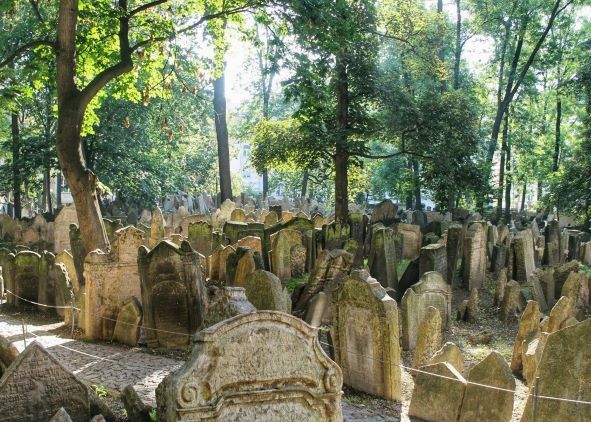

The Old Jewish Cemetery is the city’s oldest surviving Jewish burial ground. It dates back to the middle of the 15th century. The Jewish word for cemetery means “House of Life.” Like Christians, Jews believe that death is the gateway into the next world.
Due to the fact that Jewish people were prohibited from burying their dead outside the Jewish Quarter, this graveyard is crammed with some 12,000 visible tombstones. It is estimated that there are 100,000 more bodies stacked up to 12 layers below ground.
The graves were never relocated because Jewish traditions forbid moving bodies after they are buried. The settling of the ground over time has created lopsided tombstones pointing in every direction, a most surreal sight that casts an eerily, yet beautiful spell. The Old Jewish Cemetery is one of the most important Jewish landmarks in the city.
Visiting information:
- Address: Široká 3
- Opening hours: Sunday to Friday 9am-6pm (except closed at 4:30pm November to March), closed Saturdays for the Jewish Sabbath
- Entrance cost: 530 CZK – entrance fee covers all 5 Jewish Museum Synagogues (except Old New Synagogue is an extra 220 CZK), the Old Jewish Cemetery, Ceremonial Hall, and Robert Guttmann Gallery
#2 The Old New Synagogue
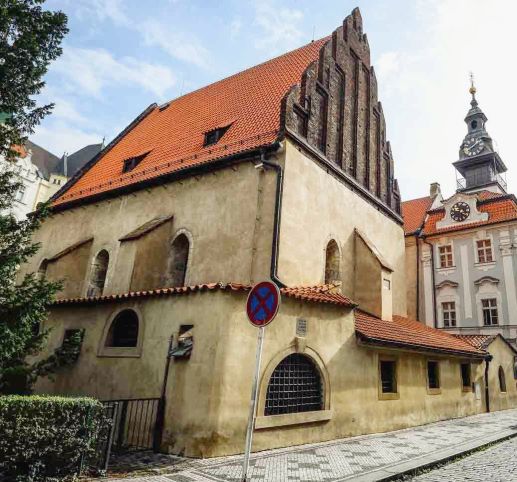
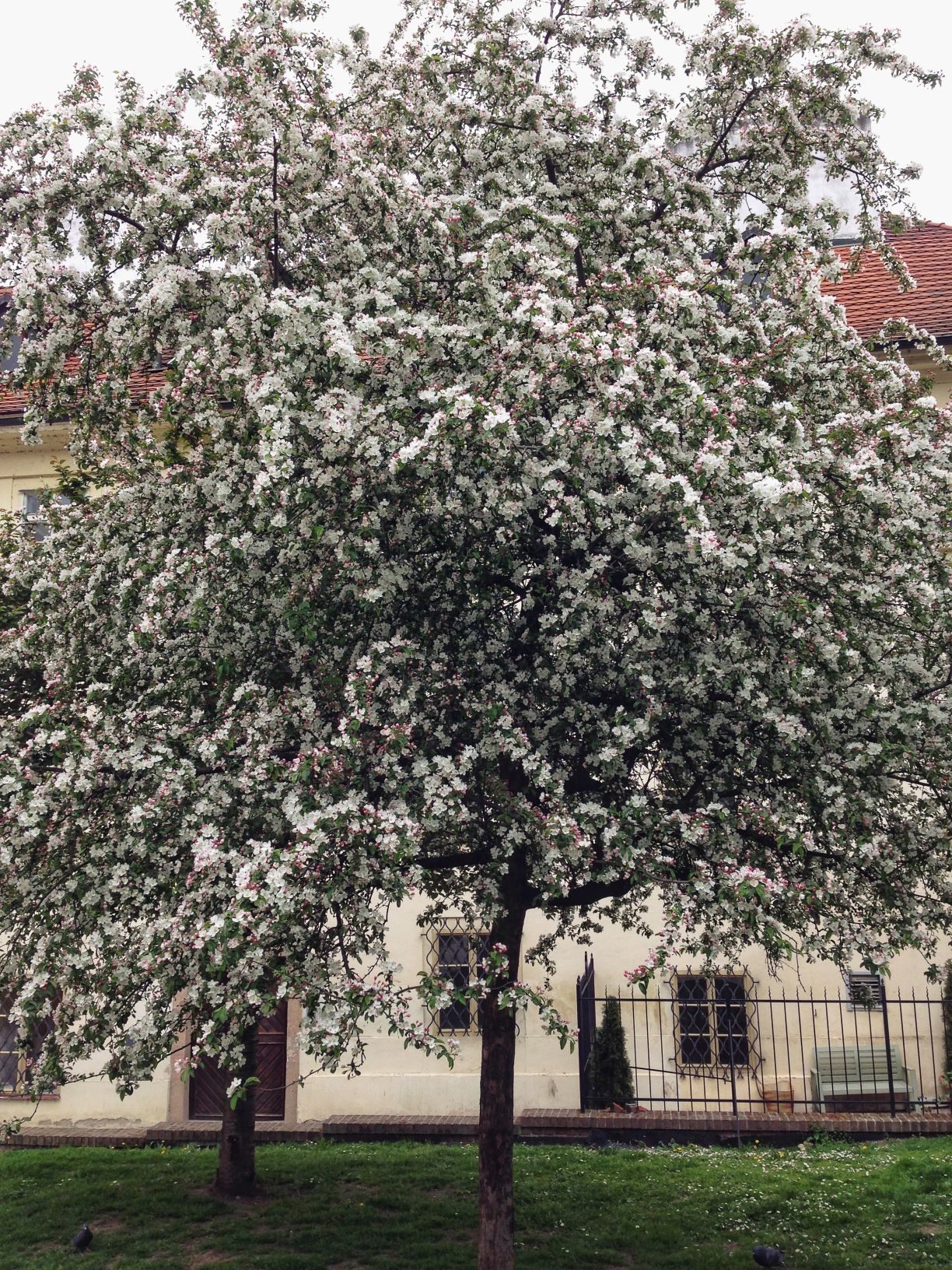
The Old New Synagogue from 1270, is the oldest active synagogue in Europe. It’s also one of the earliest Gothic buildings in Prague and the only surviving medieval synagogue in Prague.
With that comes a long rich history. The Old New Synagogue was the centre of Jewish life in Prague where many important events took place, including the coronation of King Rudolf II in 1575. It’s also the site of much folklore, including the legend of the Golem, a creature made of clay that was said to have been brought to life by Rabbi Loew to protect the Jewish community from harm.
Visiting information:
- Address: Červená, 110
- Opening hours: Sunday to Friday 9am-6pm (except closed at 4:30pm November to March), closed Saturdays for the Jewish Sabbath
- Entrance cost: 220 CZK (not included in museum tour pass)
#3 The Pinkas Synagogue
The Pinkas Synagogue is the city’s second-oldest Jewish house of worship, dating back to the 16th century. Today, it’s used as a memorial to the victims of the Holocaust. A haunting memorial with the names of over 77,000 Jewish victims from the Czech Republic who were murdered during the Holocaust.
The Pinkas Synagogue is a deeply moving and important site to visit for anyone interested in Jewish history and culture, and it serves as a powerful reminder of the importance of remembering the victims of the Holocaust.
Visiting information:
- Address: Široká 23
- Opening hours: Sunday to Friday 9am-6pm (except closed at 4:30pm November to March), closed Saturdays for the Jewish Sabbath
- Entrance cost: 530 CZK – entrance fee covers all 5 Jewish Museum Synagogues (except Old New Synagogue is an extra 220 CZK), the Old Jewish Cemetery, Ceremonial Hall, and Robert Guttmann Gallery
#4 The Klausen Synagogue
The Klausen Synagogue and Ceremonial Wall were founded in the 1690s. It sits on a site that was formerly occupied by a small Jewish school and prayer house (Klausen), in what was then a notorious red light district of the Jewish Quarter.
The Klausen Synagogue from the 17th century was used by the Jewish community as a place of worship and as a school for Jewish children. Today, the Klausen Synagogue serves as a museum that focuses on Jewish history, the Jewish way of life, and Jewish religious practices.
Visiting information:
- Address: U Starého Hřbitova 39
- Opening hours: Sunday to Friday 9am-6pm (except closed at 4:30pm November to March), closed Saturdays for the Jewish Sabbath
- Entrance cost: 530 CZK – entrance fee covers all 5 Jewish Museum Synagogues (except Old New Synagogue is an extra 220 CZK), the Old Jewish Cemetery, Ceremonial Hall, and Robert Guttmann Gallery
#5 The Spanish Synagogue
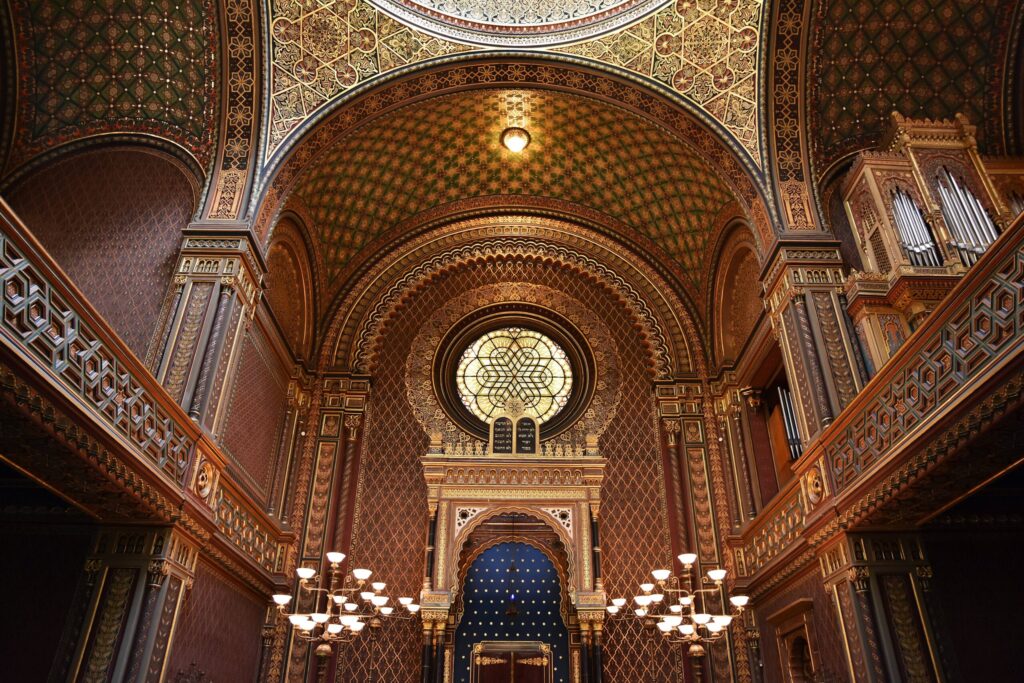
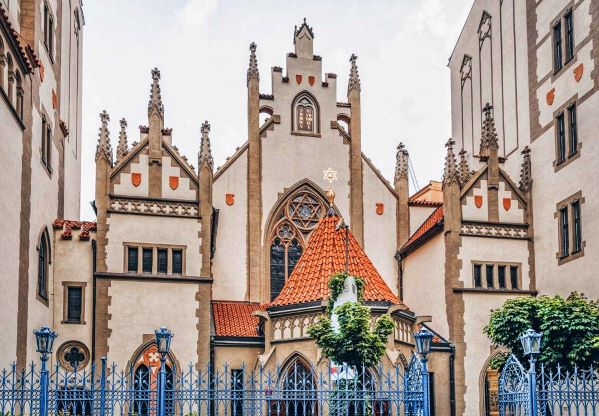
The Spanish Synagogue, also known as the Synagogue of the Spanish Jews, is one of the most beautiful and ornate synagogues in the Jewish Quarter in Prague. It was built in the mid-19th century in the Moorish Revival style and was said to be inspired by the architecture of the Alhambra Palace in Spain.
This synagogue features a stunning interior with intricate decorations and colourful stained glass windows. The walls are covered with richly decorated geometric patterns and floral designs, and the ceiling is adorned with a beautifully painted dome.
The Spanish synagogue is home to a small chapel where concerts are held as well as a small exhibit of Jewish religious artifacts.
Visiting information:
- Address: Vězeňská 1
- Opening hours: Sunday to Friday 9am-4:30pm (stays open until 6pm April to October), closed Saturdays for the Jewish Sabbath
- Entrance fee: 300 CZK covers all 4 Jewish Museum Synagogues plus the Old Jewish Cemetery and the Memorial Hall
#6 The Maisel Synagogue

The Maisel Synagogue was built in the late 19th century in the Neo-Gothic style and was named after Mordechai Maisel, a wealthy Jewish merchant who funded the construction of the synagogue.
The Maisel Synagogue has a long interesting history. It was originally built in the 16th century as a Renaissance-style building, only to be destroyed in a fire in the 17th century and rebuilt in the Baroque style. In the 19th century, the synagogue was once again destroyed, and it was rebuilt in its current Neo-Gothic style.
You can tour this synagogue and hear about how during WWII the synagogue was used to store the properties of the Czech Jewish communities.
Visiting information:
- Address: Maiselova 10
- Opening hours: Sunday to Friday 9am-6pm (except closed at 4:30pm November to March), closed Saturdays for the Jewish Sabbath
- Entrance cost: 530 CZK – entrance fee covers all 5 Jewish Museum Synagogues (except Old New Synagogue is an extra 220 CZK), the Old Jewish Cemetery, Ceremonial Hall, and Robert Guttmann Gallery
#7 The Prague Jewish Quarter Town Hall
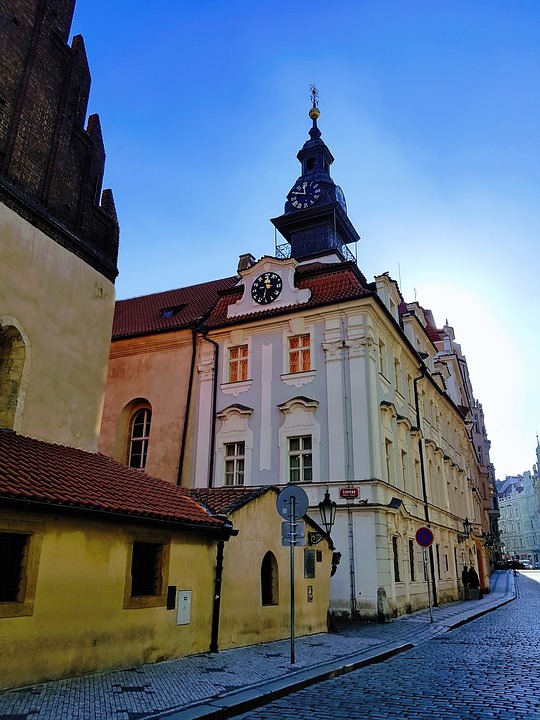

The Jewish Town Hall is located in the heart of the Prague Jewish Quarter. The former mayor, Mordechai Maisel, was instrumental in the design of the Prague Jewish Quarter. One of those buildings under the sponsorship of Maisel was the Renaissance-style Old Town Hall in 1586. The building was the main meeting place of the local Jewish community.
It will be hard to miss that the Town Hall features not one, but two clocks- one in roman numerals and the other in Hebrew numerals. Today, the Jewish Town Hall houses the Jewish Museum in Prague, which is dedicated to preserving the history and culture of the Jewish community in Prague.
Visting information:
- Address: Maiselova 250
- Opening hours:
- Entrance cost:
#8 Parizska Street
Parizska Street, or Paris Street, resembles the Champs-Élysées in Paris with its long tree-lined boulevard with high-end shops. It runs through the Jewish Quarter, connecting the Old Town Square to the Charles Bridge.
This part of the Jewish Quarter is a beautiful area to stroll due to its early 20th-century Art Nouveau buildings and pretty cafes, just like what you might find in Paris.
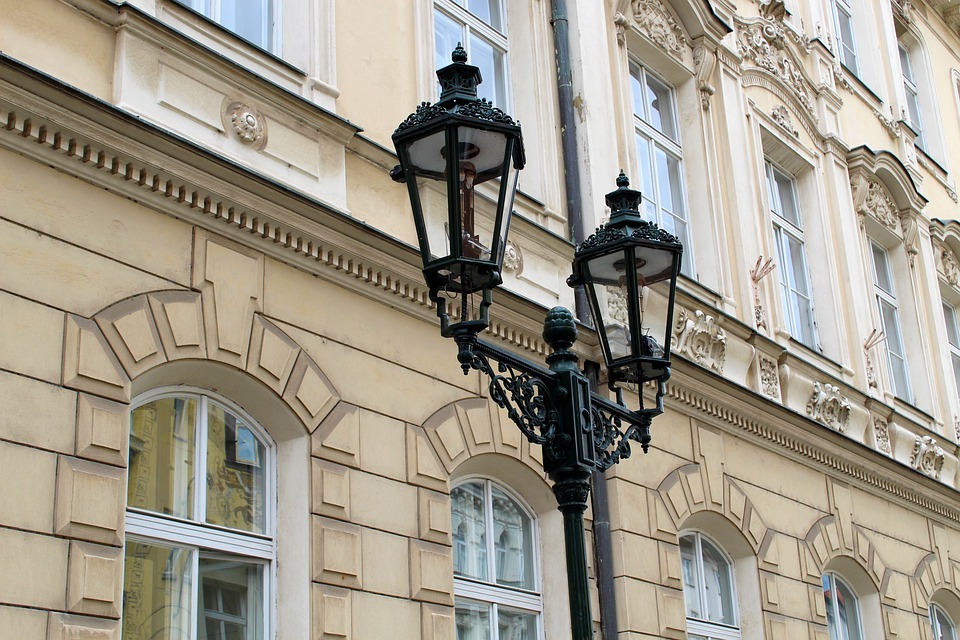
#9 The Ceremonial Hall
The Ceremonial Hall is an eye-catching building built in the neo-Romanesque style in 1911-1912 by the architect Frantisek Gerstl. Today it’s an exhibition space for the Jewish Museum focusing on the local customs, but mainly centred around death rituals. And, that is because the Ceremonial Hall was established by the Burial Society for the Jewish Cemetery.
Visiting information:
- Address: U Starého Hřbitova 243/3A
- Opening hours: Sunday to Friday 9am-6pm (closed at 4:30pm November to March), closed Saturdays for the Jewish Sabbath
- Entrance cost: 530 CZK – the entrance fee covers all 5 Jewish Museum Synagogues (except the Old New Synagogue is an extra 220 CZK), the Old Jewish Cemetery, Ceremonial Hall, and Robert Guttmann Gallery
#10 The Robert Guttmann Gallery
The Robert Guttmann Gallery features artwork by this artist and other Jewish artists from the 19th century and onward. With rotating collections the gallery aims to feature artwork from post-war to contemporary art.
Visiting information:
- Address: U Staré školy 153/3
- Opening hours: Sunday to Friday 9am-6pm (closed at 4:30pm November to March), closed Saturdays for the Jewish Sabbath
- Entrance cost: 530 CZK – the entrance fee covers all 5 Jewish Museum Synagogues (except the Old New Synagogue is an extra 220 CZK), the Old Jewish Cemetery, Ceremonial Hall, and Robert Guttmann Gallery
#11 The Franz Kafka Monument
Franz Kafka was born to a Czech-Jewish father and a German-Jewish mother. Kafka lived in the Old Town despite his Jewish heritage. As a German among Czechs, a Jew among Germans, and an agnostic among believers, Kafka lived a life of alienation and fear, which also reflects in his writings.
The Franz Kafka Monument depicts Franz Kafka riding on the shoulders of a headless figure (presumably Kafka himself). This is in reference to the author’s 1912 story Description of a Struggle.
The other sculpture to seek out is the bronze sculpture of Moses (Socha Mojžíše), by Czech sculptor František Bilek. It can be found on Prague Street.
Jewish Quarter Prague Tour
The Prague Jewish tour is the best way to learn more about the heritage of Prague’s Jewish Quarter. This guided walking tour includes all the entrance tickets to the synagogues and Jewish cemetery.
Check the prices and book your dates for this top-rated 2.5 guided walking tour.
Prague Jewish Quarter Restaurants
There are several excellent Jewish Quarter restaurants in Prague that are worth visiting. Here are a few recommendations:
- La Degustation: This is a Michelin-starred restaurant that serves contemporary Czech cuisine with a focus on local ingredients. They offer a tasting menu that includes dishes inspired by Jewish cuisine.
- Eska: This restaurant is located in a former factory building and offers a range of modern European cuisine. They have a focus on seasonal ingredients and offer several vegetarian options. They also have a bakery on-site, which produces some of the best bread in Prague.
- King Solomon: This restaurant offers traditional Jewish cuisine in a cozy and welcoming atmosphere. Their menu includes classic dishes such as gefilte fish, matzo ball soup, and latkes.
- Maitrea: This vegetarian restaurant offers a range of international dishes, including many Middle Eastern and Jewish-inspired options. They have a cozy and relaxed atmosphere and the food is delicious!
- Cafe Louvre: This historic cafe offers a range of classic Czech and international dishes, including several Jewish-inspired options. They have a beautiful interior and I felt I was transported back to Paris. Go here for the relaxed atmosphere and leisurely light.
FAQ
Does Prague have a Jewish Quarter?
Yes, Prague has a Jewish Quarter, it’s located on the right bank of the Vltava River near Old Town. This is an important site to visit to learn more about Jewish history and culture.
Why is there a Jewish Quarter in Prague?
There is a Jewish Quarter in Prague because as early as the 13th-century Jewish people were ordered to settle into one area of Prague which later was referred to as the Jewish ghetto.
What is the name of the Jewish Quarter in Prague?
The Jewish Quarter, also known as Josefov, is one of the most popular tourist destinations in Prague, located between the Old Town Square and the Vltava River. A Jewish ghetto was established here in the 12th century.
How many synagogues are there in Prague?
There are six synagogues in the Jewish Quarter of Prague. These include Old-New, Spanish, Pinkas, Klausen, Maisel Synagogues and Jewish Ceremonial Hall. The seventh is located in New Town called Jubilee Synagogue.
The Other Historic Quarters in Prague
Prague is actually made up of 5 distinct quarters. Each one features unique things to see and do. Beyond the Josefov or Jewish Quarter, be sure to visit the other 4 with the help of these guides.
- Castle district (or Hradčany)
- Old Town (or Staré Město)
- Little Quarter (or Malá Strana)
- New Town (or Nové Město)
If you LOVE EUROPEAN TRAVEL or planning a TRIP TO EUROPE, subscribe to my website! I will share my love of Europe with you, along with travel planning tips and inspiration. And, you’ll get a FREE gift for signing up – 30 Bucketlist Places in Europe! Join, and let’s be travel friends!
As a holidaymaker
Visiting the small historic Prague Jewish Quarter is one of the top things to do in Prague. Being one of the largest Jewish ghettos in Europe, it’s also one of the most well-preserved. Visiting the six synagogues, the Jewish Town Hall, and the Jewish Museum is a must when in Prague.
